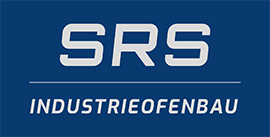Automation
Fully integrated automation concepts
Heat treatment involves a large number of individual processes which can be automated according to complexity or customer requirements. Upstream and downstream processes, such as workpiece inspections and NiO component/batch management, require mechanical and information technology linking of systems. A sensible automated coupling of processes offers considerable potential for increasing capacity utilization while minimizing operating costs.
AMS 2750 F and CQI-9
These specifications describe the requirements for pyrometry (non-contact temperature measurement) for instruments used in the heat treatment of metallic materials.
Procedures and requirements for performing process audits are also described in detail:
- Tests of system accuracy (SAT)
- Temperature uniformity in the working chamber (TUS)
- Calibration of the measuring section from the thermocouple, via the measuring line to the controller
- Specifications regarding measuring and control equipment (instrumentation)
- Documentation of verification cycles
The documented traceability of the test procedure and the approved instruments used in it is fundamental to verify both the heat treatment process and each batch treated with it with respect to the corresponding standard.
We support you in the implementation of the requirements, especially by integrating documentation and testing mechanisms into the plant control system, in order to facilitate the performance of process audits in heat treatment.

Batch tracking
Full transparency and unambiguous heat treatment proof, through consistent acquisition, recording and evaluation of measurement data and signals.
For reliable quality assurance of the process or individual batches/parts, evaluation and archiving of all relevant process variables is required.

Recipe Management
Flexible, safe and efficient production through integrated recipe management. Not every component is the same and therefore requires a very individual heat treatment. Product changeovers are often accompanied by set-up times.
To eliminate errors during changeover, the system can be equipped with predefined, component-specific production recipes.
In addition, recipe changeovers can be automated, thus shortening changeover times, because the treatment concept is determined not by the operator, but by the batch.
Hybrid furnaces
For cost reasons, gas burner systems have been primarily used for firing furnace systems. In times of strongly fluctuating gas prices, the question arises once again whether electric heating with electricity is not the more favorable alternative.
Through an optimal coupling of electric and gas heating in cooperation with an intelligent heating control system, a furnace can switch smoothly between electric and gas-fired operation without significant temperature fluctuations.
A hybrid furnace is operated with gas until the price of 1 kWh of electricity is cheaper, then it is quickly switched from gas to electricity operation.
Hybrid furnaces can therefore significantly control their own electricity load. In the interplay with own electricity generation plants and dynamic electricity prices, the kiln plant can be fired with optimized operating costs.
Standby & Wake-Up Concepts
The costs for operating media, such as gas and electricity, make up a large part of the operating costs for furnace systems. In addition to the automatic shutdown of plants or plant sections via time control, intelligent program functions can also ensure that plant sections can be shut down step by step depending on the current workload.
In addition to the targeted shutdown, the automatic start-up of plants is also helpful.


Camera-guided robotics
Image-guided methods and systems used for position detection and inspection with industrial robots hold a huge potential to increase production efficiency or reduce costs.
Due to component geometries, or sheer product variety, assembling batches which can be processed in the oven can present itself as a very complex challenge. Using suitable camera systems with intelligent analysis procedures, it is possible to clearly identify the components, to grip them and to charge them into the respective furnace grates.
Orderly charging can increase plant utilization. In parallel, component and batch data can be generated, allowing the material flow through the plant to be transparently displayed and recorded.
Operator-free operation
By consistently increasing the degree of automation, process & production plants are able to be operated largely without human assistance. Through additional and redundant safety systems and an intelligent coupling of mechanical and information technology interfaces, safe and trouble-free plant operation can be made possible without machine operators.
The plant is thus enabled to operate completely automatically over several shifts. As a result, the annual operating hours can be increased. For existing plants, this logically leads to an increase in production volume. New plants, on the other hand, could be scaled down due to the high operating hours.
Production data acquisition
Increasing the efficiency of your own production is of central importance for sustainable competitiveness. The recording of actual values of processes and conditions forms the basis for the optimization of work and production processes.
In addition to organizational operating data such as order data, technical operating data such as machine data (consumption, downtimes and running times, quantities, malfunctions) or process data (quality characteristics, process parameters, component information) can be recorded and passed on.

Emergency power concepts UPS
The supply security from the mains side is not always given in sufficient quality. Even small “mains wipers” can lead to irregular operating states or even to short-term failures of the plant control system. Faults must be evaluated and eliminated. It may also be necessary to restart plant components or safety assemblies. Apart from the temporary loss of production and the risk of damage to production goods, there is also the possibility that plant components may be damaged by prolonged irregular operation.
Thermal process plants are usually energy-intensive plants. Production via UPS is therefore usually not economical and is primarily used to put the plant into a safe standby mode or to shut it down.
Depending on the plant complexity and energy supply security, we can dimension uninterruptible power supplies (UPS) for plant control and critical plant components. According to the plant functions, we develop and implement control programs that enable a targeted and safe shutdown of the plant.
